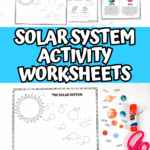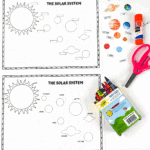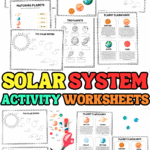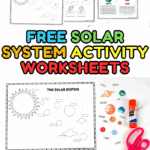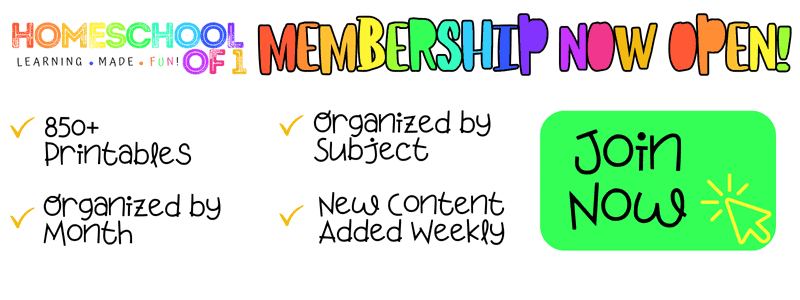Solar System Activity Worksheets for Kids (Free Printable Pack)
Solar system activity worksheets are an easy way to help kids connect with space in a hands-on way.
This free pack is designed for ages 5–9 and includes seven activities plus answer sheets and a cover page.
Kids will color posters, label planets, solve clue-based questions, and play simple matching games, all while practicing early science, fine motor, and reading skills.
Whether you’re teaching at home or in the classroom, these solar system printables make learning about the planets engaging and memorable.
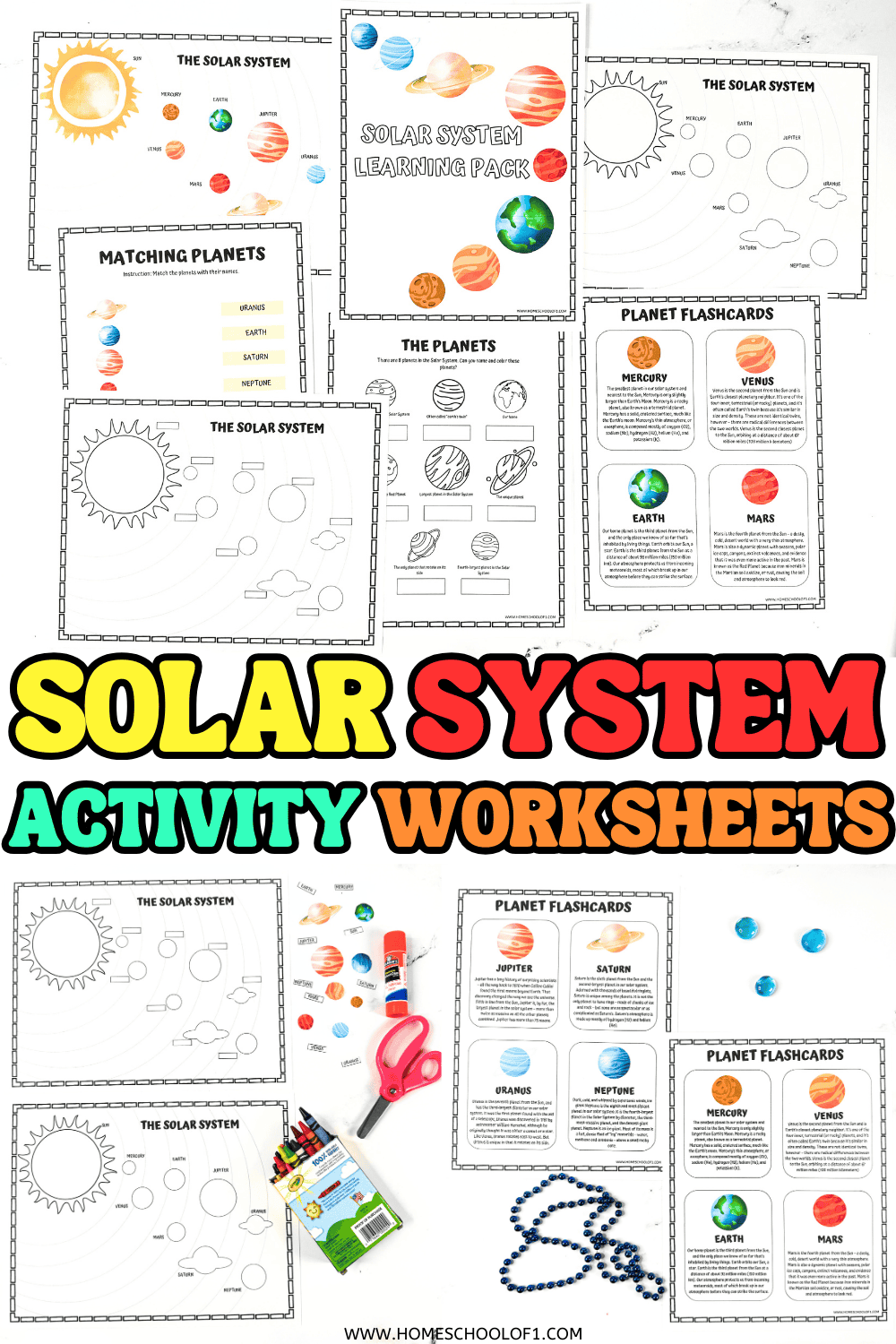
**This post may contain affiliate links. As an Amazon Associate and a participant in other affiliate programs, I earn a commission on qualifying purchases.**
What’s Included in the Solar System Learning Pack?
This printable pack builds knowledge step by step, using repetition, visuals, and short tasks to help kids remember what they learn.
It mixes posters, cut-and-paste activities, clues, and review sheets so you can teach the planets in different ways.
Full-Color Solar System Poster
This is a bright, ready-to-use reference showing all eight planets in order around the Sun. It’s great for pinning on the wall or using as a guide while kids work through the activities.
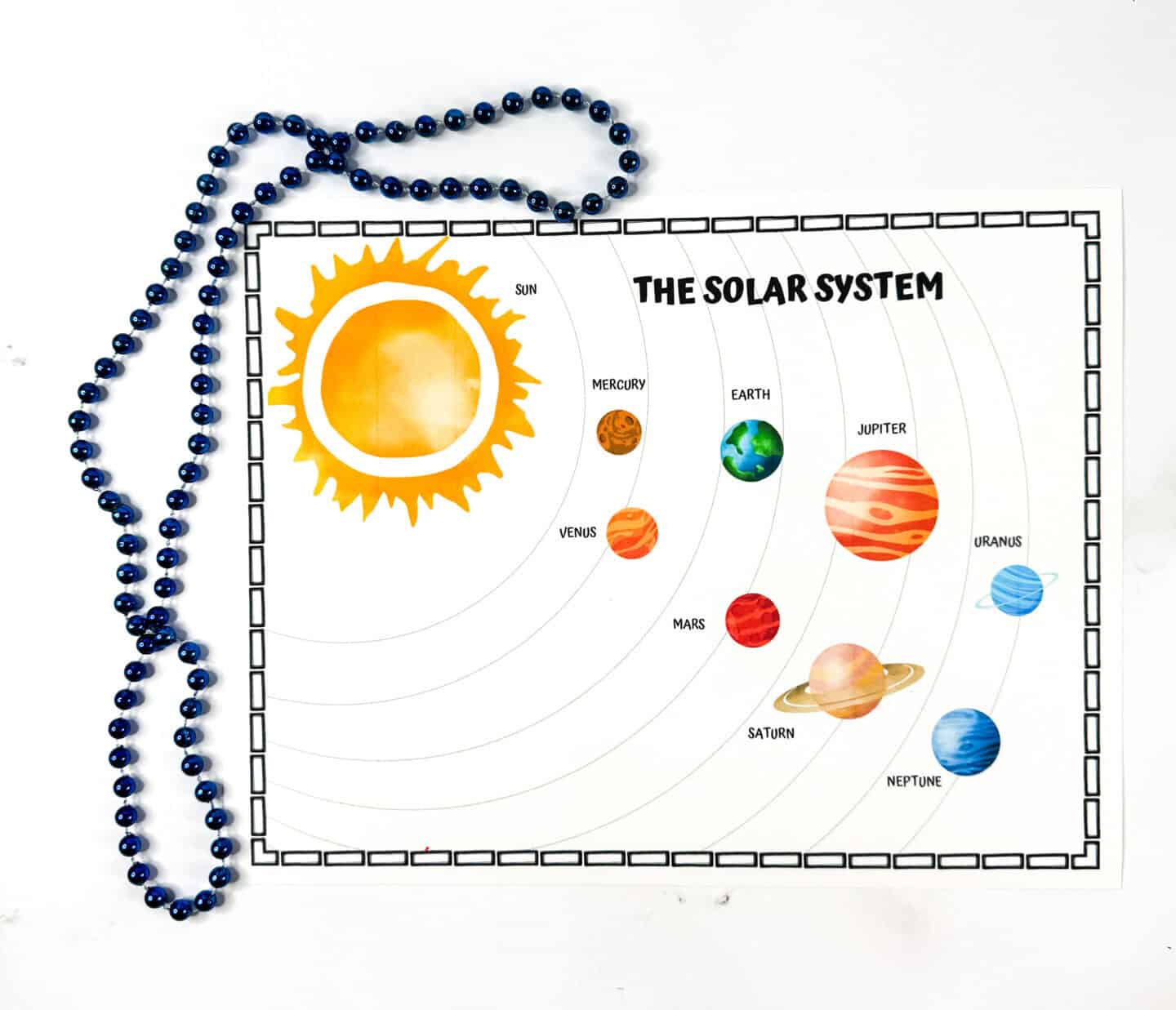
Black-and-White Poster to Color
Same layout as the full-color version, but in black and white so kids can color the planets themselves. It’s a nice way to reinforce planet order and let them get creative at the same time.
Labeling or Cut-and-Paste Template
This version leaves the planets blank. Children can either write in the names directly or cut out the planets and labels from the next page and glue them in place. It gives you a couple of flexible ways to use the activity depending on the child’s level.
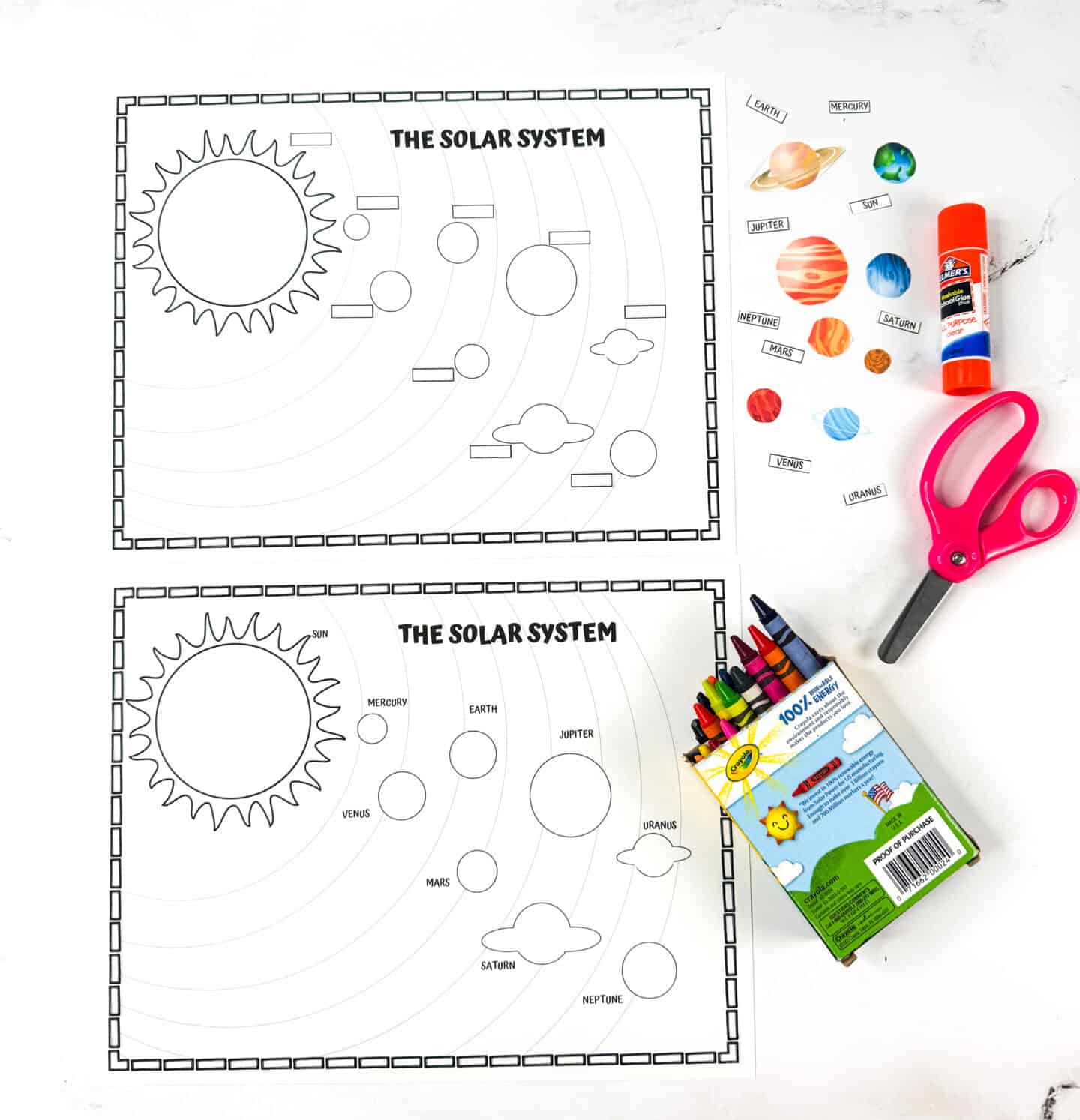
Cut-Out Planets and Names
A coloring sheet with all the planets and their names. These are designed to be colored, cut out, and matched to the previous page. It’s great for practicing sequencing and also helps with fine motor skills.
Planet Identification by Clue
This worksheet presents black-and-white images of planets with accompanying clues. For example:
- “Smallest planet in the solar system”
- “Also known as the Red Planet”
Children must identify the planet based on its description and image, then write the correct name in the blank.
An answer sheet is also included, with the same images in color and the correct planet names filled in. You can use it as a guide or let kids check their own work.
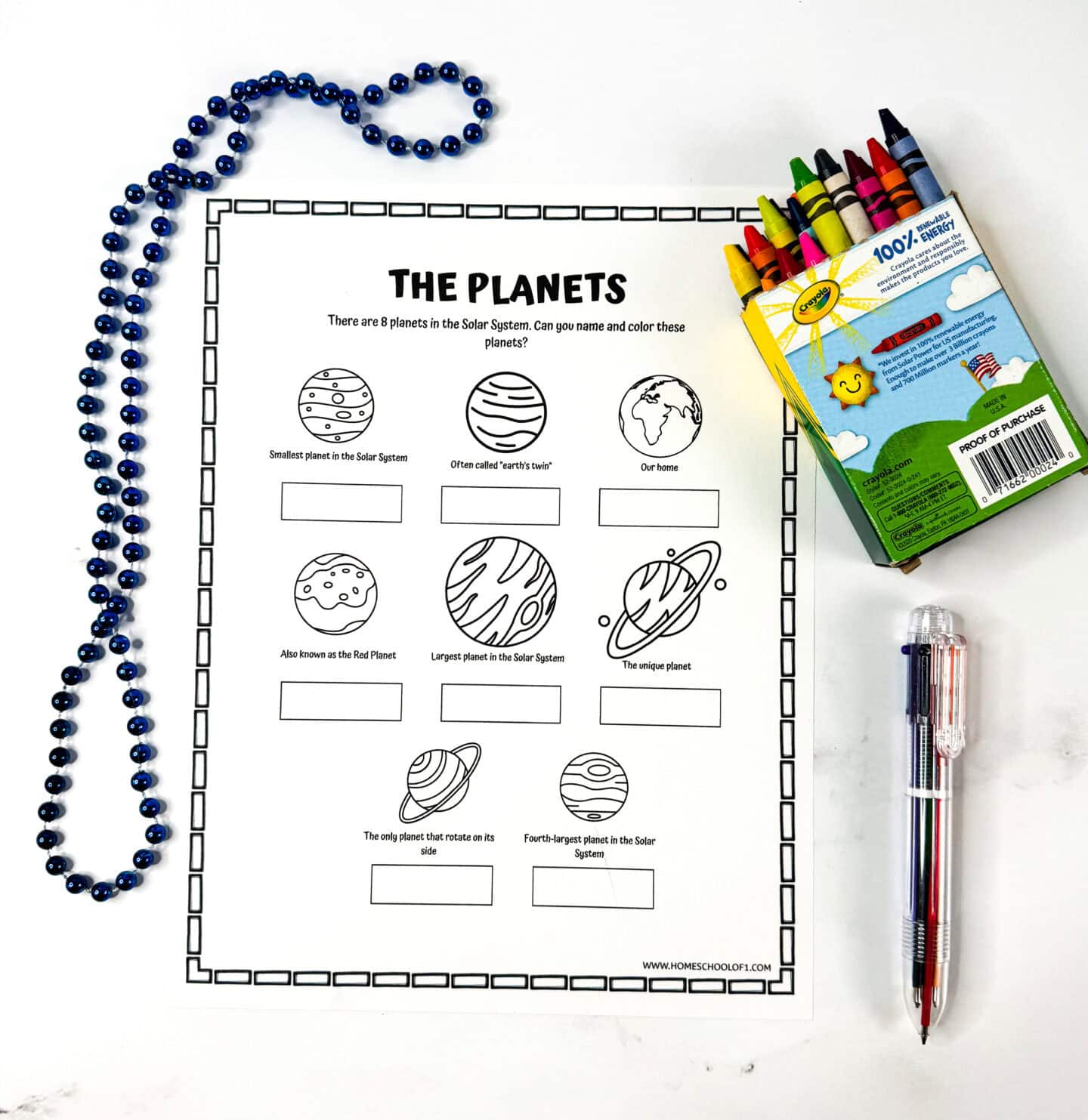
Planet Flashcards
These printable flashcards include:
- Planet names
- Short facts about each planet
- Black-and-white images ready for coloring
The flashcards can be used for games, memory challenges, or review sessions. They’re a versatile tool for reinforcing planet recognition and facts.
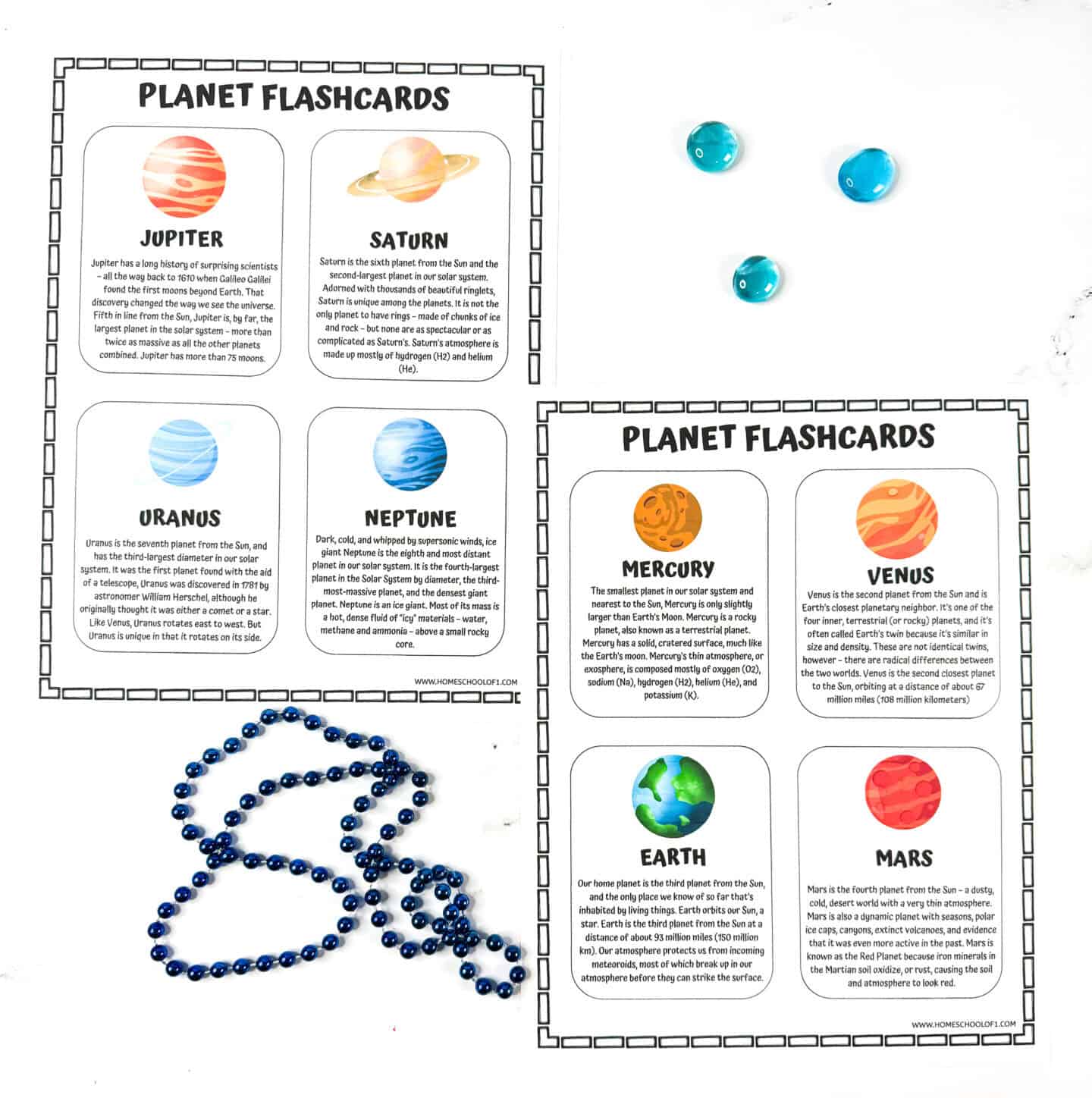
Planet Matching Activity
Children are shown a set of planet images and must match them with the correct names. This review activity helps test what they’ve learned in a fun, visual way.
There’s also a full-color answer sheet for this page to help with checking or guided learning.
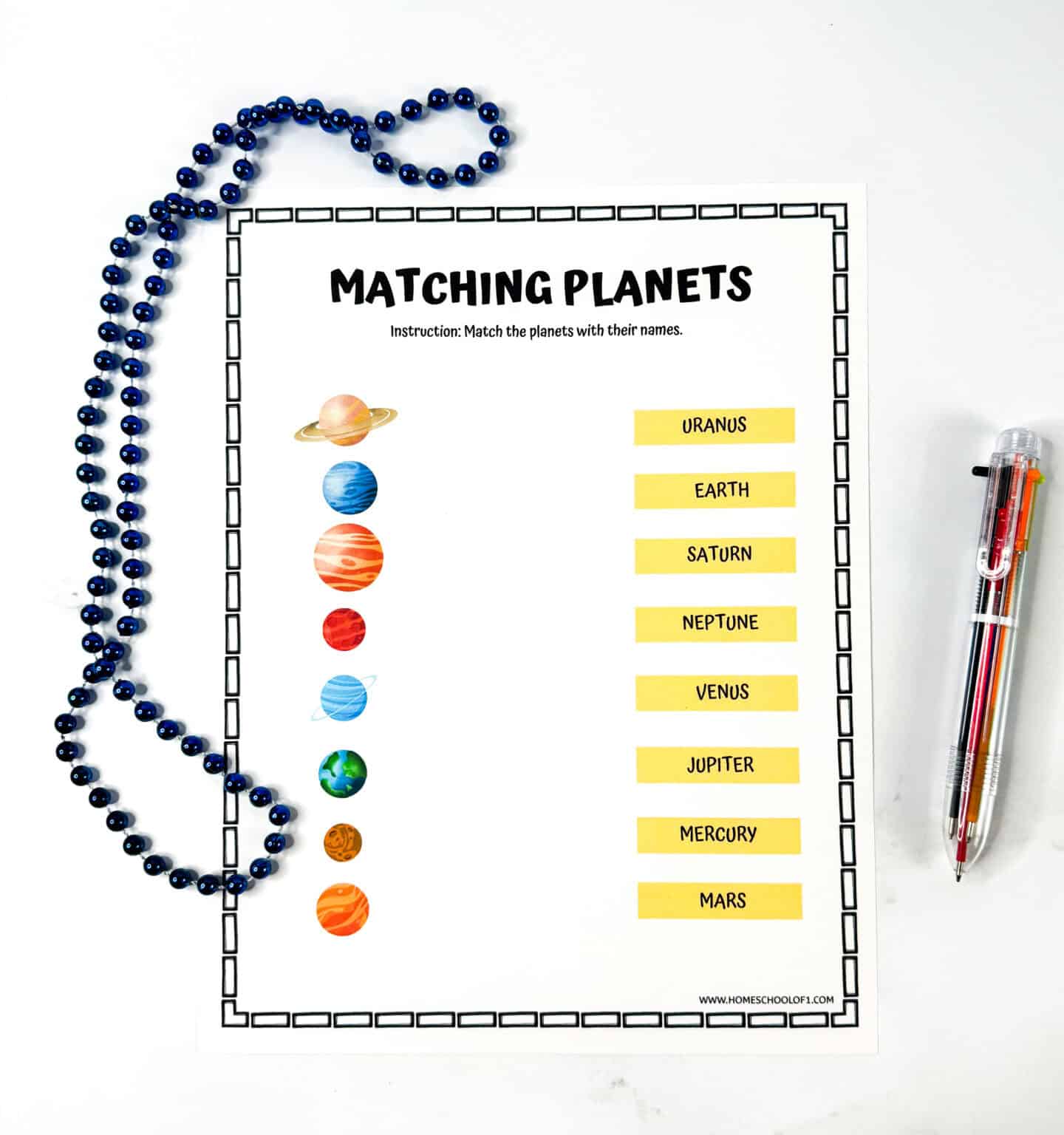
Educational Value of the Activities
These worksheets build early science knowledge while strengthening reading and fine-motor skills. Outcomes by skill:
Vocabulary & Comprehension
Students meet core terms in context, orbit, rotation, atmosphere, terrestrial planet, gas giant, Red Planet.
- Example: After labeling, ask: “Which planets are terrestrial? Which are gas giants?” (students justify choices).
Fine-Motor Control
Cutting, gluing, tracing, and labeling develop hand–eye coordination and pencil control.
- Tip: For emerging writers, use glue-on labels; for confident writers, require full spellings from memory.
Observation & Critical Thinking
Clue IDs and matching require using features (color, rings, size, position) to infer the planet.
- Example clue: “Has prominent rings” – Saturn; “4th from the Sun” – Mars.
- Quick check: “Name two clues that distinguish Neptune from Uranus.”
Independent & Visual Learning
Answer keys enable self-checking; posters/flashcards support spaced review.
- Routine: 60-second “planet order” drill with the poster, then hide it and relabel from memory.
Differentiation (fast to apply)
- Support: Circle-the-answer instead of writing; provide word bank.
- Extension: Add one new fact to each flashcard; compare day length (rotation) vs year length (orbit).
Light standards alignment (K–3 friendly)
Name and order the eight planets; use a simple model; describe observable patterns (day/night, seasons) without heavy jargon.
Age Group and Classroom Use
The pack is best suited for children ages 5–9 (roughly K–3) and works well in both classrooms and at home.
Teachers can slot the worksheets into short science units, while homeschool families often use them as part of a hands-on curriculum.
They also work well for ESL learners who benefit from the clear visuals and labeled vocabulary, and for after-school programs or learning centers where quick, low-prep activities are needed.
Because the worksheets vary in complexity, it’s easy to adjust for different ages, young children might focus on coloring and matching, while older students can tackle labeling, flashcards, and clue-based identification.
Tips for Use
These worksheets are flexible, so you can adapt them to your setting. A few easy ideas:
Print and laminate the flashcards so they last for repeated games or review sessions. Kids love using dry-erase markers to write quick facts on the laminated cards.
Start with the black-and-white poster as a coloring activity. As children color, point out the planet order and talk about which are closest or farthest from the Sun.
Add the cut-and-paste pages to a lapbook or science journal. This turns the activity into a keepsake kids can revisit when studying space again.
Make the matching game a quiz or timed challenge for small groups. It works well as a warm-up or quick review at the end of a lesson.
Use the answer sheets as teaching visuals, especially for younger or ESL learners who benefit from seeing the planets in color while hearing the vocabulary aloud.
More Planet Printables
If you want to keep the space theme going, these extras pair well with the solar system activity worksheets:
Planet coloring pages – Kids color each planet while practicing order and appearance, a simple way to reinforce what they’ve learned.
Planet word search – A quick puzzle that builds space vocabulary in a fun format.
Space worksheets for preschool – Tracing, matching, and counting activities for younger siblings or early learners just starting to explore space.
Books About the Solar System
If your child enjoyed the solar system activity worksheets, these books are a natural next step to keep their interest going:
There’s No Place Like Space – A fun, rhyming intro to the planets that’s perfect for reading aloud after working on your space worksheets.
National Geographic Little Kids First Big Book of Space – Bright photos and simple explanations make this a great follow-up for kids who want to explore more facts about space.
The Solar System: Out of This World with Science Activities – A mix of planet facts and easy experiments, ideal for kids who learn best by doing.
Get Your Free Planet Worksheets for Elementary Here!
If you don’t see the form below, click here to get the free planet printables.

